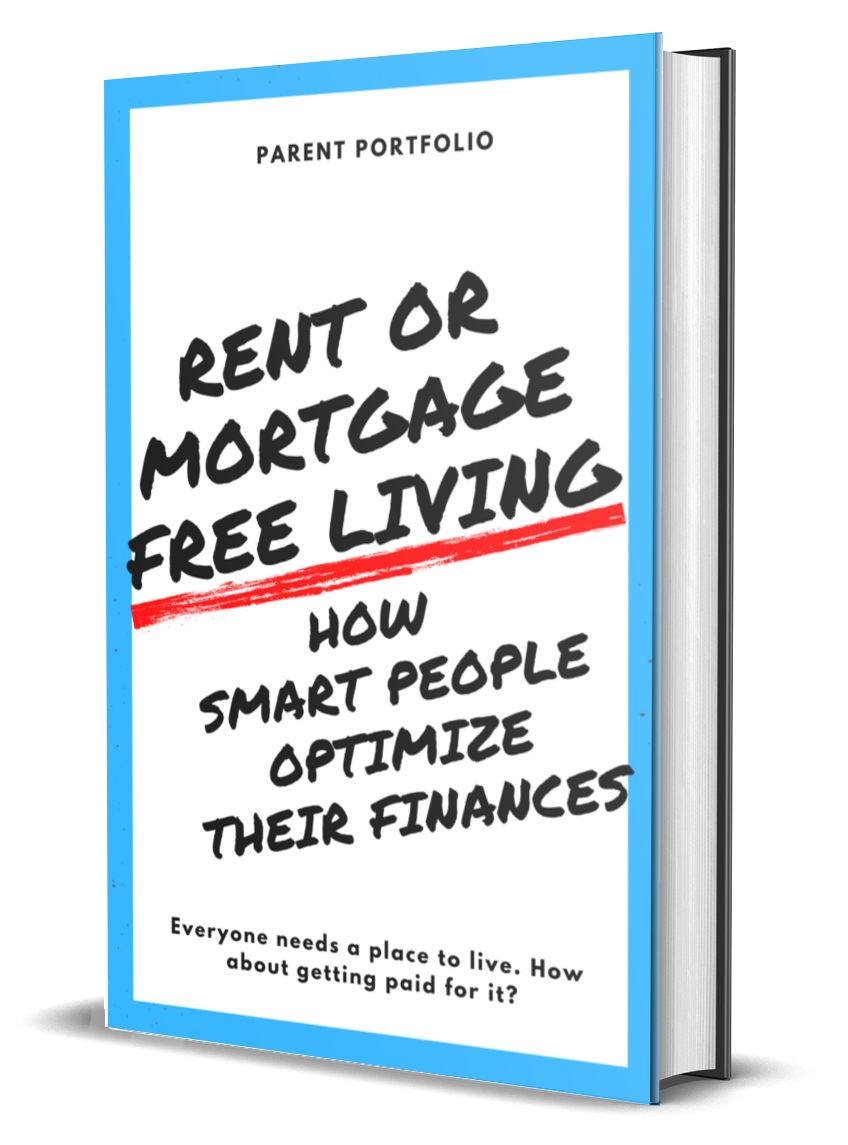How to Avoid Social Security Running Out

The Social Security program aims to provide retirement and disability benefits to workers and their families. Workers pay into the system, the government holds onto the money, and the money earns interest. When workers reach eligibility, the government returns money to them. Essentially, this system relies on a steady stream of workers. But can Social Security run out? If so, when would that happen?
There’s been much talk about the possibility of Social Security running out completely and leaving future retirees in the lurch. In reality, it’s very unlikely that the program would run out of money and shut down entirely.
But it is possible that the amount of benefits you receive from Social Security after retirement may not meet your expectations. That’s because without changes, the Social Security system is expected to deplete its existing reserves, leaving workers with a potential benefits shortfall. Here’s a closer look at the program and this issue.
How Social Security Works
The American Association for Retired Persons (AARP) describes Social Security as a “pay-as-you-go” system , meaning that the contributions made by workers today are used to pay the benefits of retirees.
When today’s workers retire, they’ll receive benefits based on what the next generation contributes. Any money that’s left over goes into one of two trust funds.
How Income Matters in Social Security
The amount each individual worker contributes to Social Security depends on their income. Employees who work for a traditional employer split the Social Security tax payment with their employer at 6.2% each and self-employed workers are responsible for the entire 12.4%.
The income cap for 2020 is $137,700. As employees contribute to the tax, they earn Social Security “credits”—one for every $1,410 in earnings in 2020 with a max of four per year.
What Is the Age Eligibility for Social Security?
Those employees become eligible for benefits when they reach 40 credits, which equals roughly 10 years, or full retirement age. For Americans born in 1960 or later, that’s 67 years old.
Getting the most out of Social Security benefits becomes a numbers game as workers get close to retirement age, because workers are technically eligible at age 62. But for each month previous to full retirement age that someone starts drawing benefits, they’re reduced by one-half of one percent.
According to the SSA . PDF File, that means if a worker’s full retirement age is 66 and 8 months and they start drawing Social Security at age 62, they’ll only get around 71.7% of their full benefit.
The benefits stop increasing at age 70, and the AARP reports that workers who are able to wait that long get the most return—full benefit plus delayed retirement credits—but individual decisions should be made on a number of factors, including employment outlook and health.
Social Security Trust Funds
After all the contributions have been paid in and benefits paid out, any remaining funds are divided up between two trust funds, where they earn interest in government-guaranteed Treasury bonds.
As of the 2020 annual report from the SSA, assets reserves at the end of 2019 were at around $2.9 trillion, divided up between the Old-Age and Survivors Insurance (OASI) Trust Fund and the Disability Insurance (DI) Trust Fund.
The larger of the two funds, the OASI, pays benefits to retired workers, their surviving spouses and eligible children, and covers administrative and other expenses. It’s the largest fund that takes care of retirees who don’t face special circumstances, and deposits are made daily. It’s been around since 1940.
The smaller DI Trust Fund handles monthly benefit payments to disabled workers and their spouses and children until they’re eligible for full benefits through the OASI.
Even though both funds are a part of the overall federal budget, they’re handled separately and the SSA isn’t allowed to pay out more than what’s in the trust fund.
Risk of Social Security Running Out
Media headlines in recent years have highlighted concerns over a potential Social Security funding shortfall. But it’s important to separate fact from fiction when understanding how Social Security works.
Myth 1: There won’t be any money to pay benefits
As mentioned, the odds of Social Security running out of money completely are low. Remember, Social Security is pay as you go with today’s workers paying in funds that are used to provide retirement benefits for today’s retirees.
When you retire, your benefits would be paid by those still working. So unless the system itself is abolished, Social Security benefits would continue to exist and be funded by workers.
Reality: Social Security surplus funds may be exhausted
While workers pay into Social Security, the program also has a surplus of trust funds that it can use to pay benefits, as described earlier. The program is scheduled to begin using those funds to pay some benefits in 2021, with payroll taxes continuing to pay the majority of benefits to retirees.
While Social Security itself is unlikely to end, the trust funds may eventually be spent down to $0, which presents the possibility of a reduction in future benefits.
Myth: People who aren’t eligible for Social Security can receive it
Another concern about the possibility of Social Security running out stems from the mistaken belief that illegal aliens and undocumented individuals can illegally claim Social Security benefits.
The idea is that those people might unfairly claim benefits they’re not entitled to, putting a burden on the system and reducing benefits for eligible workers.
Reality: Documentation is required to obtain benefits
A Social Security number or Individual Taxpayer Identification Number is required for the Social Security Administration to create a benefits record for a citizen or non-citizen who’s authorized to work in the U.S. Someone who has either could legally obtain benefits through Social Security since they’ve technically paid into the system.
Myth: The current system can’t support an aging population
As life expectancies increase and the birth rate declines, it’s natural to assume that living longer may affect Social Security’s ability to continue paying out benefits. Someone who’s 25 now, for example, may be wondering what year will Social Security run out and how will it time up with my retirement?
Reality: Social Security can adapt
While there’s little the government can do to change the demographic makeup of the population, lawmakers can be proactive in proposing changes to Social Security. That includes measures that can help to preserve benefits for as many workers as possible while minimizing the odds of running out of funding.
What Is the Expected Social Security Shortfall?
According to a 2020 projection from the Social Security Administration (SSA), workers who reach retirement age after 2034 are projected to receive 76% of scheduled benefits.
So if your normal benefit amount would have been $1,500 per month you’d receive $1,140 per month instead.
That’s important to consider as you create a plan for retirement. You may need to adjust your plan for saving and investing to make up for any projected Social Security benefits shortfall.
Problems With Social Security
Because benefit payouts are tied to the SSA’s reserve balance, it begs a question for many working Americans—what happens when that balance hits zero? The SSA itself acknowledges that benefits will likely only be available in full until 2034. That’s just 14 years away.
Reasons for the depletion of fund reserves are attributed to a number of challenges, including a rise in program costs. Cost-of-living adjustments, or COLA, have been steadily increasing. Life expectancy for Americans has grown longer, while the number of workers hasn’t kept pace with the number of retirees.
How to Avoid Social Security Running Out
Lawmakers, financial experts, and retirement advocates are starting to float ideas for how to save the program. To date, the two ideas that have been floated include raising the Social Security tax or reducing the benefit—two options that are likely to be unpopular with both workers and retirees.
There are many details on how to implement those two ideas. Some business publications say that the deficit could be eliminated with a combination of both that aggregate to 2.84% of payroll—that equals less than 3 cents for each dollar earned, and it would be split by workers and employers.
Another proposed fix, called the Social Security 2100 Act , would make a number of changes to the current system, such as changing the formula for COLA to use a Consumer Price Index for the Elderly (versus its current price index for wage earners).
It would also involve setting the new minimum benefit at 25% above the poverty line. Advocates say the result would be like getting a 2% raise of the average benefit.
History of Early Social Security
The need to secure a financial future for ourselves and our loved ones isn’t new—or uniquely American. Across the pond, the English passed a series of “Poor Laws” around 1600 intended to ensure that the state provided for the welfare of its poorest citizens.
Americans were quick to embrace the idea that the country should take care of its people, but at first it wasn’t society at large. In 1862, for example, a post Civil War-era program offered pensions to disabled Civil War soldiers, and widows and children of the deceased.
Around the late 1800s, some private companies were starting to offer pension plans too. The first company to offer a real pension plan was the Alfred Dolge Company, which made pianos and organs. They took 1% of an employee’s salary and put it into a pension plan, and then added 6% interest per year.
In 1935, President Franklin D. Roosevelt signed into law the Social Security Act. The government then started collecting Social Security taxes two years later. Then on January 31, 1940, the first monthly retirement check of $22.54 was issued to Ida May Fuller in Ludlow, Vermont.
This Isn’t the First Social Security Shortfall
The retirement en masse of America’s Baby Boomers and parallel decline in birth rate is taking the blame for Social Security’s current problems. But this isn’t the first time the fund has been in trouble.
When the program first began phasing in, for example, workers were contributing but no one was retiring yet, so the fund grew a nice little surplus. Congress, seeing those nice big numbers, were generous with increasing benefits every time they had the chance.
When the 1970s rolled around, however, and those workers reached retirement age, that upward momentum came to a screeching halt. On top of that, a flaw in the program’s COLA formula that caused benefits to double-index, or increase at twice the rate of inflation rather than matching it.
It became such a mess that task forces were created, the error got its own name “The Notch Issue,” and instead of making changes to Social Security during even years, because increases and expansions were good for election campaigns, Congress made changes on odd-numbered years.
Social Security Amendments of 1983
Amendments in 1983 addressed the financing problems to the Social Security system. These changes were the last major ones to the program and were based on recommendations from a commission chaired by Alan Greenspan.
The Greenspan Commission adjusted benefits and taxes. The resulting reforms have generated surpluses and the buildup of a trust fund. However, many experts project that the retirement of the baby boomers, along with other demographic factors, will exhaust the trust.
What Can I Do About Social Security?
The SSA allows contributors to keep track of their Social Security accounts online, work with retirement and benefits estimation tools, and even apply for retirement benefits online.
Perhaps the two most important tools in the journey toward retirement are education and planning—knowing where you are, where you want to be, and what you need. Understanding the ins and outs of the ideal retirement age, whether that’s through Social Security or private retirement savings plans, and how to avoid penalties can help form a solid plan.
Aside from government benefits, one of the easiest steps for traditionally employed workers is to take full advantage of their employer’s 401(k) matching plans. These are programs in which the employer can match what you contribute to the 401(k).
If your employer doesn’t offer a 401(k) or matching plan, consider an IRA or Roth IRA. Regular IRAs are tax-deductible like 401(k)s, meaning you’re not taxed until your withdrawal in retirement. Meanwhile, contributions to Roth IRAs are not tax-deductible, but you can withdraw tax-free in retirement.
The Takeaway
Without fixes, the cash reserves of the SSA will become depleted and workers who reach full retirement age after 2034 will not receive their full benefits.
It can be a scary proposition for some, but knowing that the deadline is approaching is a huge advantage in that members of the workforce who have time to take measures to counter the expected shortfall.
You can help grow your retirement savings by opening a traditional or Roth IRA with SoFi Invest®. Active IRAs provide access to a range of portfolios. With automated IRAs, SoFi will manage a mix of stocks and bonds for individuals. Not sure where to start? Members get access to Certified Financial Planners, who can give advice and guidance on financial decisions.
Disclosures:
The information provided is not meant to provide investment or financial advice. Investment decisions should be based on an individual’s specific financial needs, goals and risk profile. SoFi can’t guarantee future financial performance. Advisory services offered through SoFi Wealth, LLC. SoFi Securities, LLC, member FINRA / SIPC . SoFi Invest refers to the three investment and trading platforms operated by Social Finance, Inc. and its affiliates (described below). Individual customer accounts may be subject to the terms applicable to one or more of the platforms below.
1) Automated Investing—The Automated Investing platform is owned by SoFi Wealth LLC, an SEC Registered Investment Advisor (“Sofi Wealth“). Brokerage services are provided to SoFi Wealth LLC by SoFi Securities LLC, an affiliated SEC registered broker dealer and member FINRA/SIPC, (“Sofi Securities).
2) Active Investing—The Active Investing platform is owned by SoFi Securities LLC. Clearing and custody of all securities are provided by APEX Clearing Corporation.
3) Cryptocurrency is offered by SoFi Digital Assets, LLC, a FinCEN registered Money Service Business.
For additional disclosures related to the SoFi Invest platforms described above, including state licensure of Sofi Digital Assets, LLC, please visit www.sofi.com/legal. Neither the Investment Advisor Representatives of SoFi Wealth, nor the Registered Representatives of SoFi Securities are compensated for the sale of any product or service sold through any SoFi Invest platform. Information related to lending products contained herein should not be construed as an offer or pre-qualification for any loan product offered by SoFi Lending Corp and/or its affiliates.
External Websites: The information and analysis provided through hyperlinks to third-party websites, while believed to be accurate, cannot be guaranteed by SoFi. Links are provided for informational purposes and should not be viewed as an endorsement.
Tax Information: This article provides general background information only and is not intended to serve as legal or tax advice or as a substitute for legal counsel. You should consult your own attorney and/or tax advisor if you have a question requiring legal or tax advice.
SOIN20007
This article is originally on SoFi.






